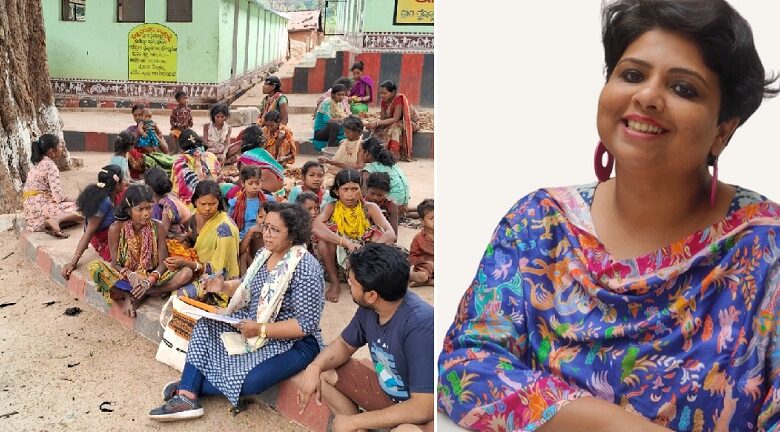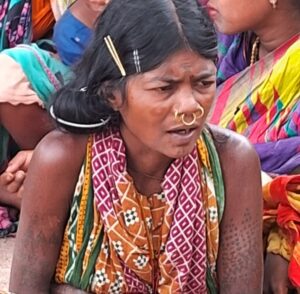Health /Lifestyles
Storytelling is a powerful tool for communication

Saikat Kumar Basu
Storytelling is the art of conveying events, real or fictional, through words, images, or actions. It often involves a narrator and an audience, with the aim of sharing experiences, imparting lessons, or sparking imagination. Storytelling can take many forms, including oral traditions, written narratives, film, theater, and digital media. The importance of storytelling is several folds. Stories carry traditions, values, and histories from generation to generation, helping to maintain cultural identity and recognition. Stories allow people to understand others’ perspectives and experiences, fostering empathy and connection. They bridge gaps between different cultures and ways of life. Storytelling is a powerful tool for education. It helps simplify complex ideas, making them easier to remember and more relatable. Lessons learned through stories often stick better than mere facts.
Stories are engaging and memorable, making them effective in influencing opinions and behavior. Whether in marketing, politics, or advocacy, a well-told story can change hearts and minds. Beyond its practical uses, storytelling also serves as a form of entertainment, sparking imagination and creativity. It allows people to explore new worlds, ideas, and possibilities.In a true sence, storytelling helps us make sense of the world, connect with others, and pass on knowledge in an impactful and engaging way.
A modern day professional story teller is a powerful healer who deals with the internal healing of individuals. The power of a story that stems out of imagination, helps in the process of decision making, though it is complex. It is a unique journey of an individual that helps in buildings skills such as Communication, Strategic thinking, Research adaptability and Team coordination. Story Telling is about changing life through captivation of the audience. It is important to mention that mental health and mental wellness is also incorporated in the process of story telling.
 A leading anthropologist and educationist from Eastern India, Dr. Suparna Sanyal Mukherjee, Associate Professor and Head of the Department of Education, Seacom Sills University, Birbhum, West Bengal has been working extensively about the significance of storytelling in tribal communications. She has conducted several painstaking interview sessions on varied aspects of storytelling and it’s socio-cultural significance among different tribes like Santhals, Lodhas, Mahalis, Birhors, Khonds, Lepchas, Bhutiays, Totos, Maria to mention only a handful. She mentioned that based on her research experience and data collection, she recognizes storytelling to be one of the very powerful and early form of mass communication between various members of our tribal ancestral. She feels storytelling builds, interconnects as well as strengthens the emotional and psychological bonds between various members of a tribe as a source of collective wisdom and as an efficient communication tool.
A leading anthropologist and educationist from Eastern India, Dr. Suparna Sanyal Mukherjee, Associate Professor and Head of the Department of Education, Seacom Sills University, Birbhum, West Bengal has been working extensively about the significance of storytelling in tribal communications. She has conducted several painstaking interview sessions on varied aspects of storytelling and it’s socio-cultural significance among different tribes like Santhals, Lodhas, Mahalis, Birhors, Khonds, Lepchas, Bhutiays, Totos, Maria to mention only a handful. She mentioned that based on her research experience and data collection, she recognizes storytelling to be one of the very powerful and early form of mass communication between various members of our tribal ancestral. She feels storytelling builds, interconnects as well as strengthens the emotional and psychological bonds between various members of a tribe as a source of collective wisdom and as an efficient communication tool. Priyanka Chatterjee aka ‘Golpodidi’ is an International Story Consultant, an Award-winning Storyteller, a Process Drama Coach, a Design Thinker, a Career Coach, an MBA (Gold Medalist), an alumna of International Institute of Storytelling, Emerson College, UK. She’s the Artistic Director, Arts4Change International (a social impact organisation). She is also the Founder, Wild Strawberry and Director, Storytelling Education and Arts India Council (SEAIC). With 19+ years of storytelling experience in Fortune 500 MNCs, leading Indian Media House and Not-for-Profits, Golpodidi has touched lives of more than half-a-million children and 80000 adults. Navigating the world with her Story bag made Golpodidi realise- “The power to change one’s life lies in changing one’s story.” Priyanka suggests, truly speaking storytelling is her earnest passion; and that it opens up new channels of communication between individuals that strengthens our relationships.
Relationship in any form is nourished by this avenue. Practical experience is urgent and important to know, how life can be transformed through-Communication, Better Understanding, Informal (Casual) Exchanging, Brightness of the mind, Sharing of pains, Cries and Joys. Through active participation in the story telling process it is possible to reach in a better understanding of life through positive attitude by starting to look at things around you with zeal and enthusiasm, trying to understand the story which other people are sharing and learning to appreciate others. Self-realization is a great tool for transformation for an individual through active participation in the story telling process, the healing starts there.
Photo credit: Saikat Kumar Basu






